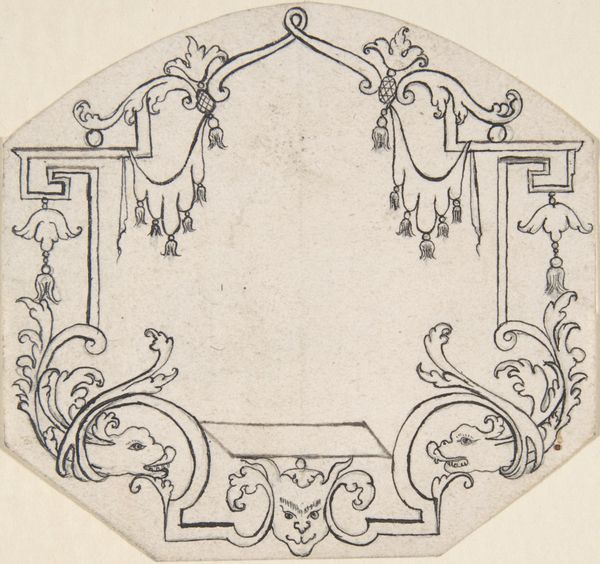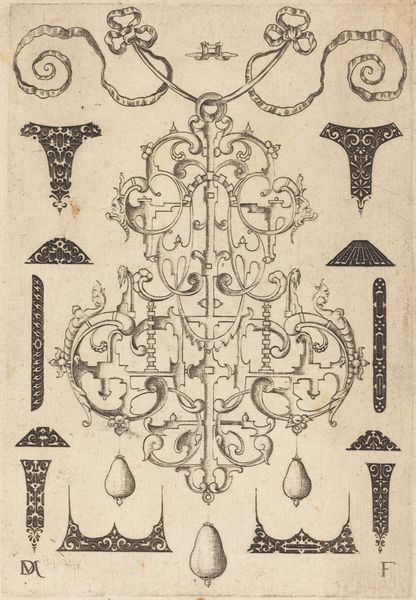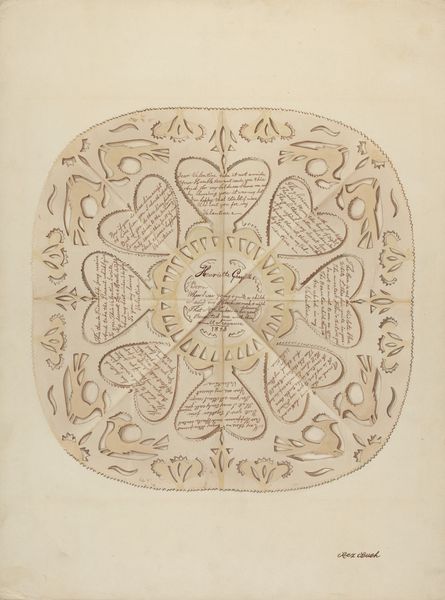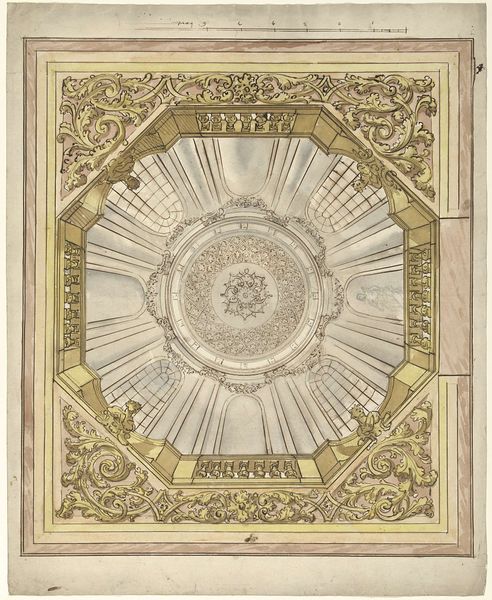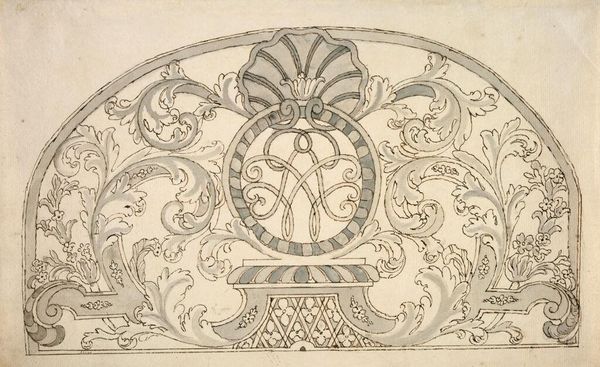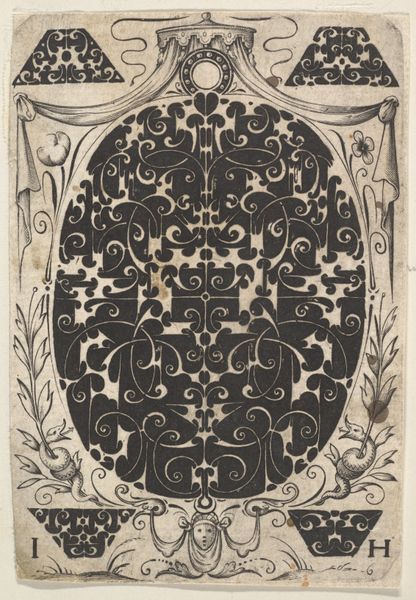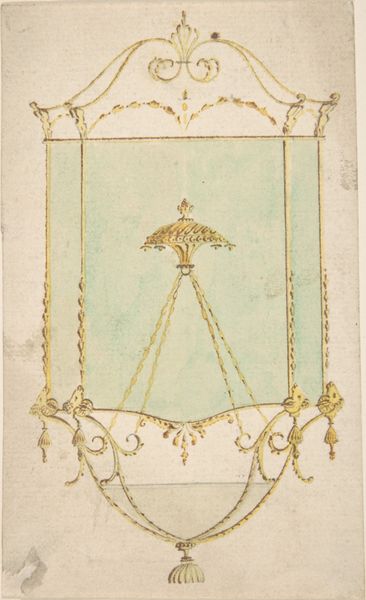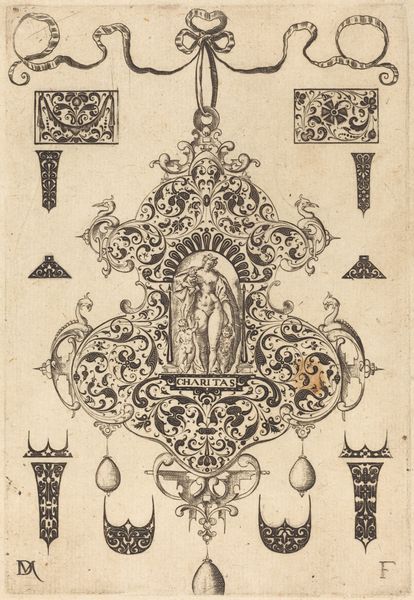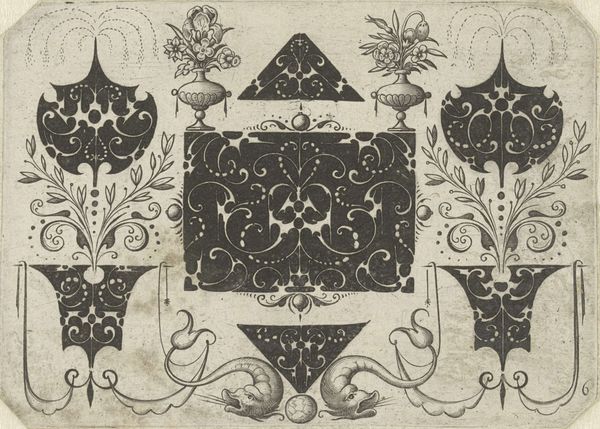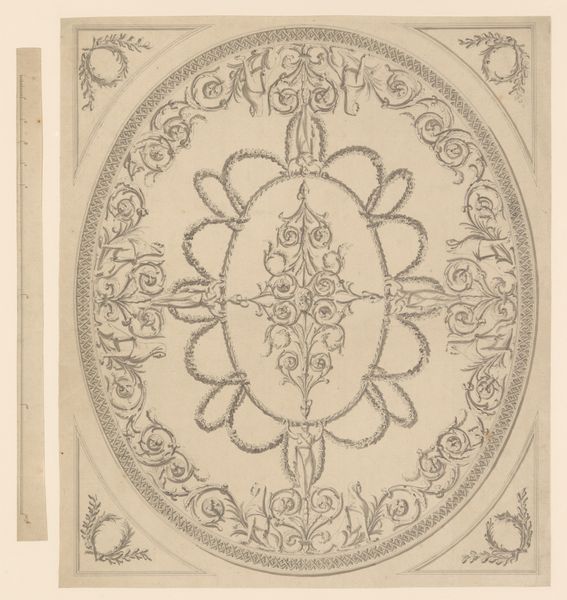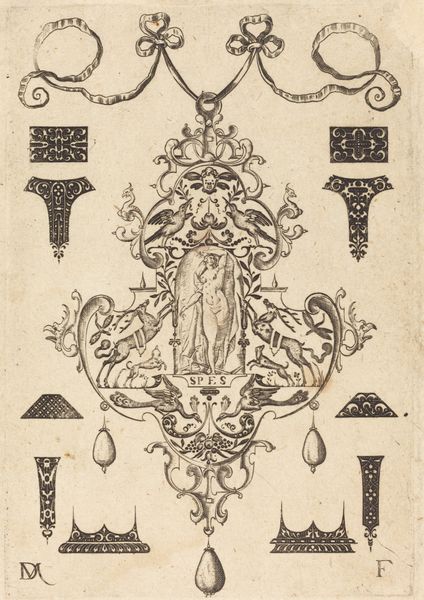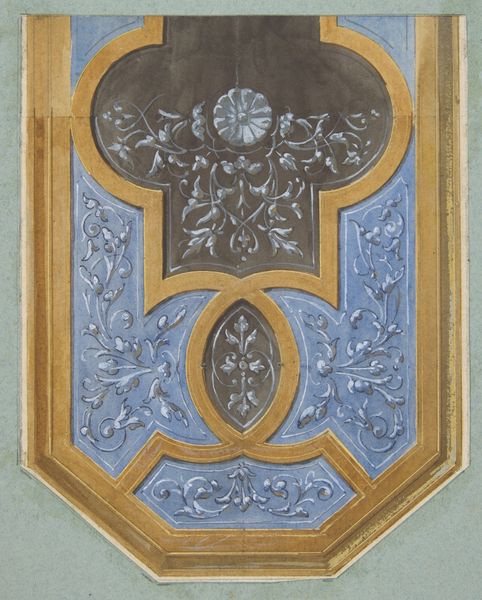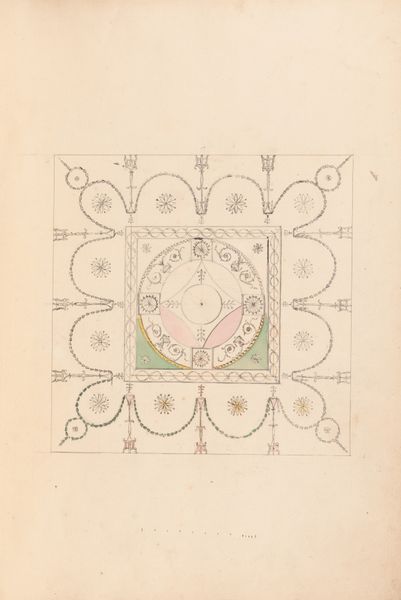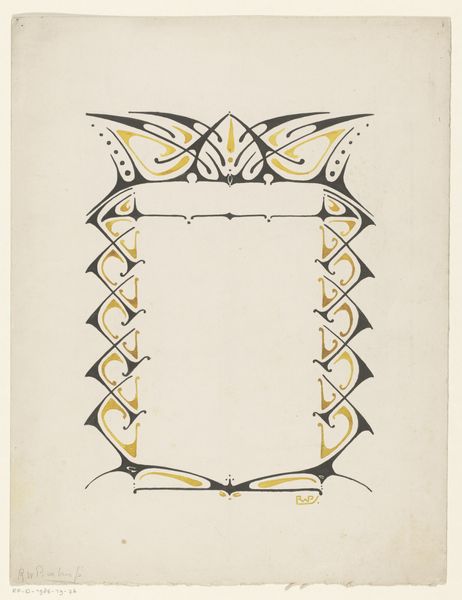
Decoratief ontwerp met twee vissen in een zeshoek 1876 - 1924
0:00
0:00
drawing, ink, pencil
#
drawing
#
art-nouveau
#
etching
#
figuration
#
ink
#
geometric
#
pen-ink sketch
#
pencil
#
decorative-art
Dimensions: height 278 mm, width 254 mm
Copyright: Rijks Museum: Open Domain
Curator: This is "Decoratief ontwerp met twee vissen in een zeshoek," or "Decorative design with two fish in a hexagon," by Gerrit Willem Dijsselhof. It's an interesting example of Dutch Art Nouveau, dating somewhere between 1876 and 1924. Editor: Immediately, I'm struck by its balanced asymmetry. The fishes mirror each other, creating this sense of yin and yang within a rigidly geometric space. What principles of organization are at play here? Curator: Precisely! The design reflects the key principles of Art Nouveau through its use of natural forms within decorative patterns. The mirroring of the fish and repetition of plant-like designs in a zeshoek, or hexagon, frame certainly suggests themes related to symmetry and balance. But, also consider the context in which the piece emerged – the growth of the Dutch East Indies and its effect on art. Editor: Interesting! So, this aesthetic fascination wasn’t born out of nowhere? Are we to think of this as representing nature, in its purest form, or the stylized adaptation, reflective of the period, as some of your Dutch East Indies theorists wrote? Curator: It’s less about purity and more about cultural dialogue. Dijsselhof incorporated those decorative aspects that were representative of their own social environment, but looked more abstract, with influences also found in places such as Japan at the time. Editor: Note how Dijsselhof employs various lines and shades of grey to achieve a balanced structure. His unique stylistic perspective truly exemplifies how different materials enhance expression. Are we looking at an incomplete or finished product? Curator: Likely, it is unfinished and, if we understand its creation during the height of that artistic influence and commercial enthusiasm that drove Dijsselhof’s art. I wonder if the two fishes may mean the balance of forces within. Editor: It's more complex than meets the eye. I'm compelled to decode further, given the structural balance, mirroring symmetry, and how everything just feels balanced as a structural design. Curator: The social context illuminates its artistic significance!
Comments
No comments
Be the first to comment and join the conversation on the ultimate creative platform.
